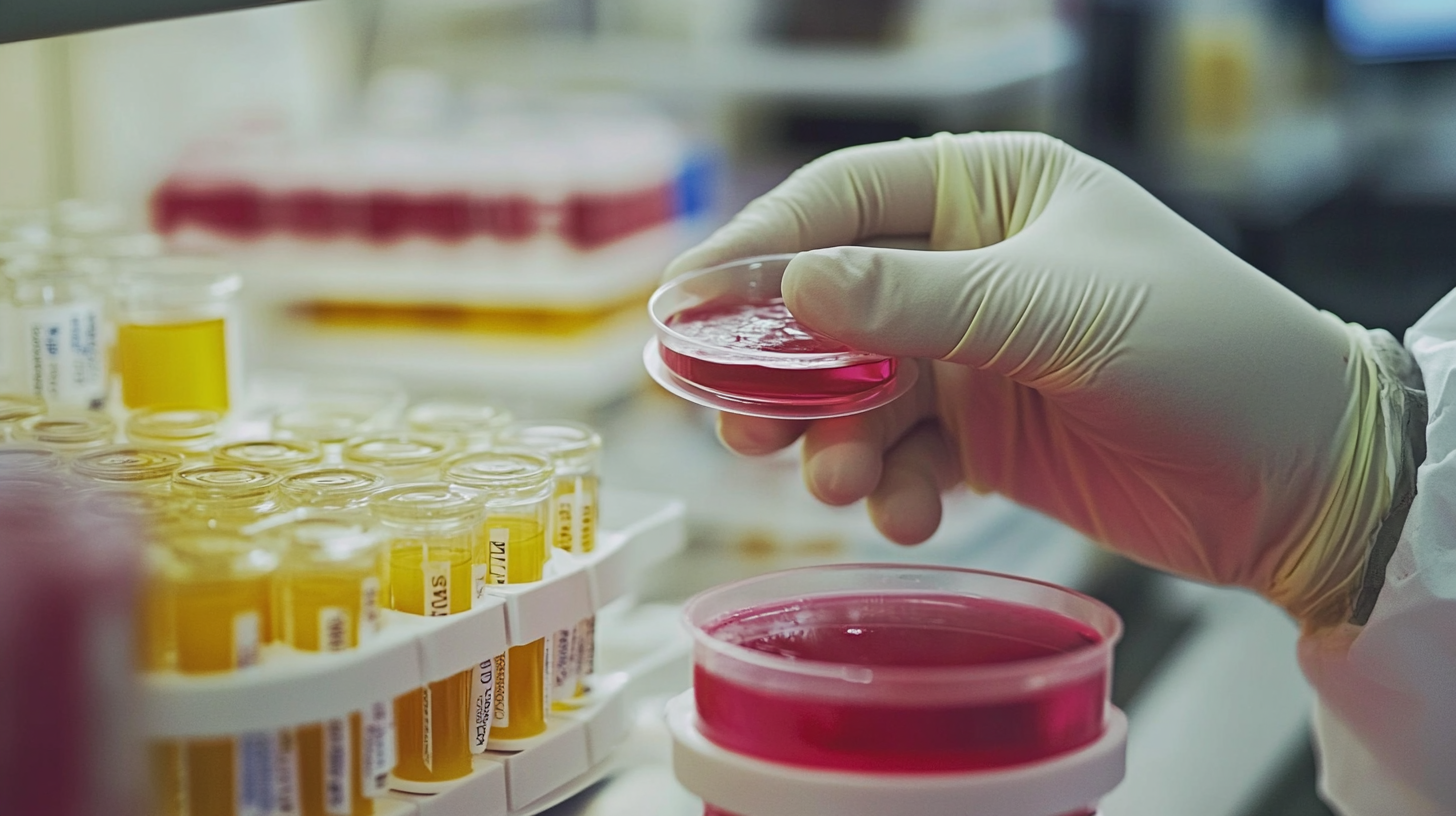7 Essential Insights for Sourcing Effective Bacterial Infection Medicine Globally
The global market for Bacterial Infection Medicine is experiencing significant growth, driven by the rising incidence of bacterial infections and the increasing prevalence of antibiotic resistance. According to a report by Grand View Research, the global antibacterial market was valued at approximately $42.5 billion in 2020 and is projected to expand as healthcare systems invest in advanced therapeutic solutions. In light of the World Health Organization's warning that antibiotic-resistant infections could cause 10 million deaths annually by 2050, the need for effective sourcing of bacterial infection treatments has never been more critical. This blog aims to provide essential insights for healthcare professionals and procurement specialists to navigate the complexities of sourcing effective Bacterial Infection Medicine globally. As the landscape of bacterial infections continues to evolve, understanding the strategic factors in sourcing and selecting the right treatments is vital for enhancing patient outcomes and combating the growing threat of resistance.

Key Factors in Assessing Global Suppliers for Bacterial Infection Medicines
When sourcing effective bacterial infection medicines globally, understanding key factors in assessing suppliers is crucial. A recent study highlighted that antibiotic resistance (AMR) is a significant challenge to global health, closely tied to the misuse and overuse of antibiotics in both human and veterinary fields. The World Health Organization (WHO) estimates that AMR could cause 10 million deaths annually by 2050 if current trends continue, underscoring the importance of sourcing medicines from responsible suppliers who adhere to rigorous stewardship principles.
Furthermore, the dynamics of the microbial community in industrial wastewater treatment systems reveal that environmental factors significantly influence the effectiveness of bacterial treatment approaches. This highlights the necessity of evaluating suppliers not just on their product offerings, but also on their commitment to sustainable practices that minimize environmental impacts and ensure effective treatment options.
In addition, ensuring safe and readily available drinking water is paramount for public health and is often intricately linked to the quality of sourced medicines. It is imperative for global suppliers to maintain high standards to prevent antibiotic residues that may exacerbate resistance issues. By assessing these crucial factors—including environmental responsibility and adherence to best practices in antibiotic use—organizations can secure effective and sustainable solutions in treating bacterial infections globally.
Navigating Regulatory Challenges in Different Countries
Navigating the regulatory landscape for sourcing effective bacterial infection medicine on a global scale poses significant challenges. According to a report by the World Health Organization, antibiotic resistance is responsible for approximately 700,000 deaths annually, underscoring the urgency for effective treatment options. However, the regulation of these medicines varies widely across jurisdictions, complicating efforts for pharmaceutical companies aiming to expand their markets.
In the European Union, for instance, stringent regulations through the European Medicines Agency (EMA) necessitate comprehensive clinical trials before approval, which can delay market entry significantly. Contrastingly, in emerging markets such as India, the regulatory framework may be less rigorous, leading to faster approval times but potentially compromising safety and efficacy standards. A survey by PwC reveals that nearly 44% of pharmaceutical companies cited regulatory compliance as a major bottleneck in their operations.
Moreover, international differences in patent laws can impact the availability of generics, which are essential for treating bacterial infections affordably. The 2022 Global Innovation Index highlights that countries with robust intellectual property protection often see higher investment in research and development for new antibiotics. As the global market evolves, understanding these regulatory nuances becomes crucial for effectively sourcing and supplying bacterial infection medicines worldwide.
7 Essential Insights for Sourcing Effective Bacterial Infection Medicine Globally
| Insight | Key Considerations | Regulatory Challenges | Country Example |
|---|---|---|---|
| Understanding Local Regulations | Familiarize with country-specific guidelines | Varied approval processes | USA |
| Pharmaceutical Quality | Ensure Good Manufacturing Practices (GMP) | Stringent inspections | EU Countries |
| Supply Chain Transparency | Traceability of sourced materials | Complex logistics | China |
| Cultural Awareness | Understand local healthcare practices | Differing acceptance of medicines | India |
| Market Competition | Analyze existing products | High competition | Brazil |
| Adherence to Safety Standards | Follow safety and efficacy guidelines | Regulatory hurdles for approvals | Japan |
| Regulatory Updates | Stay informed on changing laws | Adapting to new regulations | South Africa |
Understanding the Role of Quality Control in Production
In the pharmaceutical sector, the quality control processes in the production of bacterial infection medicines are critical to ensure safety and efficacy. Recent reports show that the global pharmaceutical quality control market is projected to reach approximately $34 billion by 2026, reflecting an increasing emphasis on stringent quality standards. The integration of advanced technologies, such as artificial intelligence and digital solutions, is transforming traditional quality control systems. For instance, companies like G42 Healthcare are leveraging AI to enhance predictive analysis in pharmaceutical manufacturing, significantly minimizing the risks associated with contamination and ensuring that products meet regulatory requirements.
Moreover, the blood products industry, a key segment within the broader biopharmaceutical sector, has also seen a push toward digitization to improve quality assurance. According to recent market research, the global blood products market is expected to grow by 6.1% annually, emphasizing the importance of maintaining high-quality standards in the sourcing and production of blood-derived medicines. Innovations in separation and purification technologies are pivotal in ensuring that these products are safe for patient use. This proactive approach to quality control not only mitigates risks but also fosters trust in the healthcare system, which is essential in addressing the growing concerns over the adequacy of bacterial infection treatments globally.

The Importance of Cost Analysis in Medicine Sourcing
Cost analysis plays a crucial role in the procurement of bacterial infection medications on a global scale. As highlighted in recent discussions around joint public procurement within the European Union, better utilization of this tool can significantly enhance the effectiveness of sourcing pharmaceutical products. By collectively negotiating prices, countries can leverage their purchasing power, leading to lower costs for essential medications without compromising quality.
Furthermore, the adoption of value-based procurement strategies can transform the pharmaceutical landscape. These strategies focus not just on the sale price of drugs but also on their quality and the overall service provided. Studies indicate that fixed-price procurement arrangements encourage innovation among medical inventors to develop cost-effective solutions, ultimately benefitting public health. By prioritizing a supply chain that balances efficiency and resilience, stakeholders can ensure that effective bacterial infection treatments are not only accessible but also sustainably sourced, addressing the pressing issue of inflated drug prices in many regions.
Cost Analysis of Bacterial Infection Medicines Globally
This bar chart illustrates the cost analysis of different bacterial infection medicines sourced from various regions across the globe. The data reveals significant variations in pricing based on geographical location and sourcing strategies.
Leveraging Technology for Efficient Sourcing Processes
In the rapidly evolving landscape of pharmaceuticals, leveraging technology for efficient sourcing processes is crucial for companies seeking effective bacterial infection medicines. According to a report by Grand View Research, the global antimicrobial drugs market is projected to reach USD 54.1 billion by 2027, growing at a CAGR of 2.9%. This growth highlights the increasing demand for effective sourcing strategies that can meet the needs of healthcare providers and patients alike.
Implementing advanced technologies such as artificial intelligence (AI) and blockchain can significantly enhance sourcing efficiencies. AI algorithms can analyze vast amounts of data to identify potential suppliers, assess their compliance with quality standards, and predict market fluctuations. Furthermore, blockchain technology provides an immutable record of transactions, ensuring transparency and traceability throughout the supply chain. A recent study by Deloitte indicates that blockchain can reduce supply chain costs by 20% to 30%, underscoring the potential for technology to transform sourcing processes in the pharmaceutical industry.
Additionally, the adoption of digital platforms for supplier collaboration fosters agility and responsiveness. By utilizing e-procurement systems, organizations can streamline procurement processes, reduce lead times, and improve communication with suppliers. The Pharmaceutical Supply Chain Initiative suggests that enhancing supplier relationships through technology can lead to better negotiation outcomes and ultimately a more reliable supply of essential medicines. As the market for bacterial infection treatments continues to expand, embracing technology in sourcing strategies will be essential for maintaining competitive advantage and ensuring patient access to vital therapeutics.

